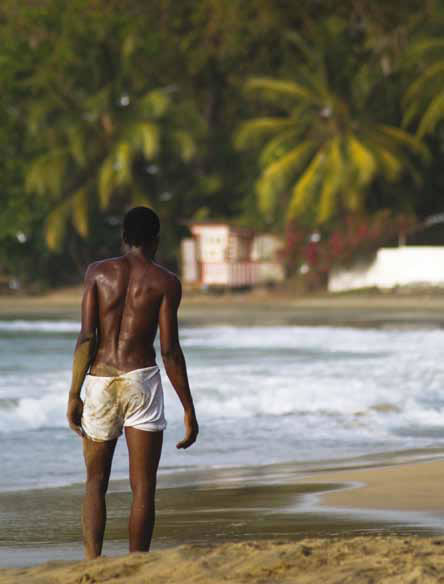
Originally published in the November 2011 issue of Destination Magazine
Rattling Chains by Rachel Loveland with further research by Wycliffe Muga
The Role of Africans
Undeniably the violently exploitative nature of the East African slave trade represents a horrific and disturbing smear across world history. It is, therefore, peculiar that the advocacy movement calling for slavery reparations appears to be in denial about this atrocity, preferring to focus blame on America and Europe for the Atlantic trade of Africans.
Moreover, there is a further glaring obliteration from the case made for slave reparations – the uncomfortable, inescapable fact of African complicity in, and profit from, the trade of its own people. Slavery in Africa pre-existed the arrival of the Arabs. It was practiced as a form of disposing of captives from warring groups, but more significantly, was a means for the common African to procure wealth.
There was very little recognition of land rights – land was typically held communally and distributed on the basis of need. This, in turn, was determined by the number of labourers each family could obtain. Labour investment was required as a means of increasing productivity, and a cheap and easy method to do this was to “invest” in slaves, which instigated early slave raids on nearby villages. Evidently systems were already in place to be further exploited as slavery became more central to the economy with an increase in Arab demand.
There is a further glaring obliteration from the case made for slave reparations – the uncomfortable, inescapable fact of African complicity in, and profit from, the trade of its own people
Few traders went into the interior in search of Africans to enslave, mostly due to fear of disease and attack. Rather, they bought their slaves from local African dealers. In the East African interior the slave trade contributed to the development of very powerful states whose economies were highly dependent on slaves. Competition between neighbouring states caused many wars which lead to the capture of more slaves – a case of Africans exacerbating the trade in Africans.
Groups including the Yao and the Nyamwezi, who operated around Lake Tanganyika in Tanzania, acted as intermediaries and raided adjacent states to capture and sell people into slavery. In return for slaves, the Nyamwezi wanted to trade for glass, spices, clothes, mirrors and guns. Shockingly the value of human life, as measured by their fellow Africans, was frequently set at just one bead per slave.
In Lamu town, the locals came to thrive on the trade, acting as intermediaries between Arabs and the African Interior. For example, the increased demand for food posed by the presence of the slave port at Lamu allowed rich local merchants to buy land for plantations, which were worked by as many as 500 slaves at a time.
Other Africans established power bases allowing them to control vast trading routes. Nyungu Ya Mawe was the leader of a band of Ruga Ruga, a contemporary of the famous Nyamwezi warlord Mirambo and was referred to as a “ferocious highwayman” by Jérôme Becker (a Belgian lieutenant). Mawe based his operation at Kiwale so he was strategically placed to control all trading activities along the routes from the East African coast to Utipa and Lake Tanganyika. Those whom he conquered, he sold to Arab traders.
The most infamous of all slave traders was Tippu Tip, (Hamed bin Mohammed). In spite of his Arab name, his grandfather was an African slave. Yet, with a flagrant disregard for this familial tie to the commerce of flesh and blood, he operated trade in an area that stretched over a 1,000 miles – from inland regions to his birthplace of Zanzibar.
What this Means in Modern Days
This should really be at the heart of any serious discussion on the East African slave trade, bearing in mind that it was British gunships which put an end to the slave trade between East Africa and the Arabian Gulf in the late 19th and early 20th centuries. How is it possible that demands for reparations from this region tend to look towards the West but not East towards the Arab world, or inwards at Africa itself? P. T. Bauer, the famous developmental economist, has noted in Equality, the Third World and Economic Delusion.
“The supply of slaves for that trade was organised by Africans and Arabs.” He continues, “Arabs do not feel guilty, nor are they made to feel guilty, about their role in the slave trade.” And yet neither have Africans. The true context of the slave trade is shrouded in a culture of deniability. For blame to be correctly designated, we cannot ignore the responsibility of those that made the trade of slaves possible, including Africans themselves.
Originally published in the November 2011 issue of Destination Magazine, authored by Rachel Loveland with further research by Wycliffe Muga.
For more articles like this one, check out Destination Magazine and on Facebook – Celebrating our unique culture and fascinating history while investigating issues pertinent to East Africa.
